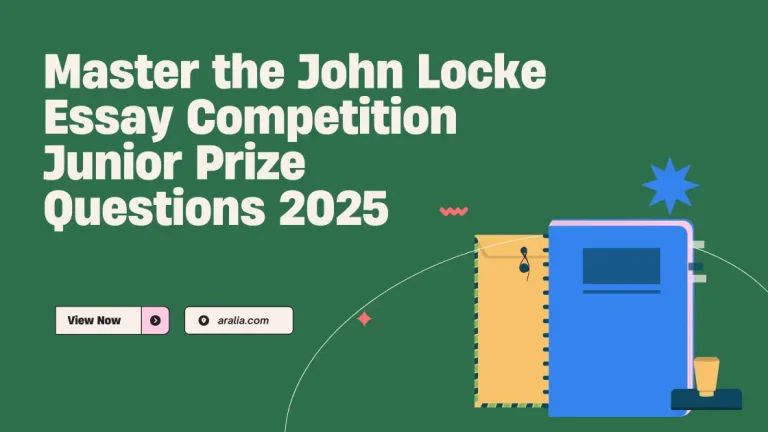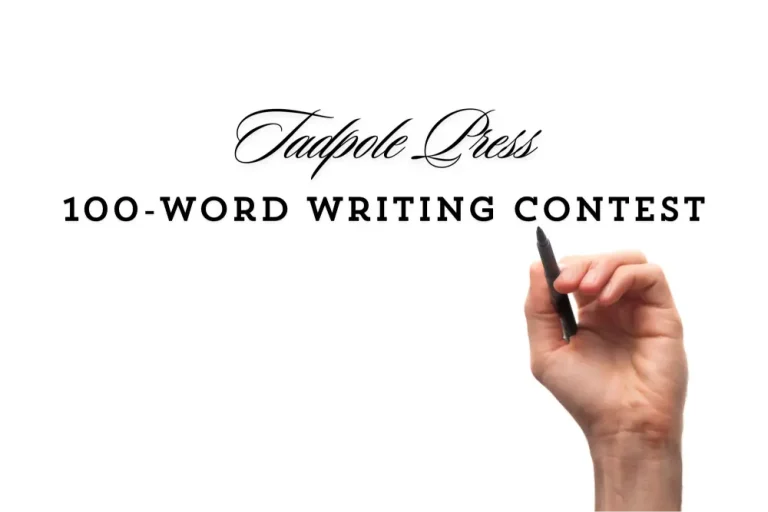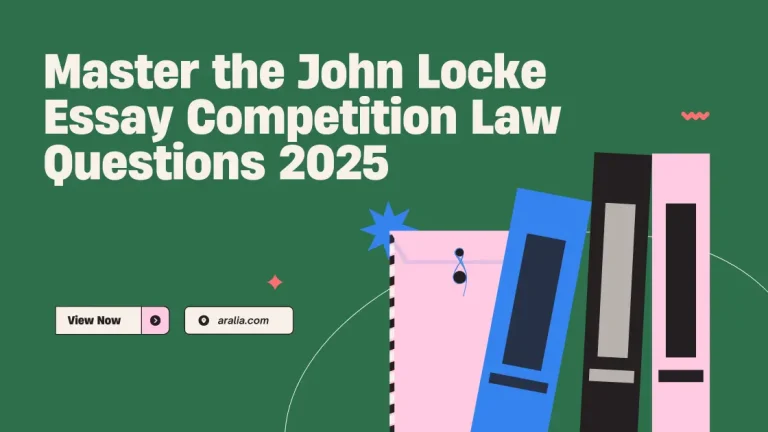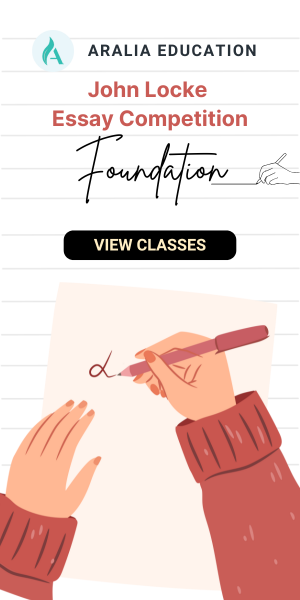1. What is the HIR Academic Writing Contest
- Theme A: Inequalities in a VUCA World
- Theme B: Global Challenges and Collective Actions
2. What are the eligibility and requirements for the HIR Academic Writing Contest?
Students are eligible if they are in grades 9 to 12 in any of the fifty states, the District of Columbia, the U.S. territories, or if they are U.S. citizens/lawful permanent residents attending high school overseas, or students who reside in countries outside of the United States.
For submission requirements, the submitted article must be around 800-1,200 words (not counting diagrams, tables of data, or authorship declaration). For writing style, submissions must be analytically backed from a perspective on an under-appreciated global topic. Further information about the guidelines can be accessed HERE.
3. What are the reviewers/judges looking for when evaluating a student's works?
There are two components that judges are evaluating based on: Content and Style. The scoring rubric ranges from 1 (D/F) to 5(A+).
Content: Chosen topic, Content structure, Use of Evidence, Analysis, and Argument
Style: Tone, Spelling, Grammar and Punctuation, Citation, and Coherence to HIR Writing
- The topic is underappreciated in mainstream media, relevant to international affairs, and connects back to the theme of this year (Globalization vs. Isolation)
- The introduction should hook the reader and set up for author’s arguments
4. How can I stand out in the HIR Academic Writing Contest?
HIR Academic Writing Contest is an excellent opportunity for students interested in international affairs and writing.
- Find inspiration from other emerging writers on HIR
Since HIR Harvard International Review is a quarterly magazine focusing on providing news about international affairs, you can certainly start off your writing process by reading other articles on the site.
Within each category, HIR Harvard International Review provides examples of articles for you to check out:
- Practice writing analytical essay
An analytical essay is one of the five types of high school essays, where students must provide an in-depth analysis of a topic. Analytical essays are critical in developing students’ writing skills because they require a deeper understanding of the topic of discussion while providing an objective and comprehensive overview of the topic. Students should not focus on persuading readers to a certain point of view when writing an analytical essay but to provide an analytically backed perspective with well-researched arguments and evidence.
So, how do you write an excellent analytical essay? To write a good analytical essay, you must focus on structure and style. This article will use several examples from HIR’s previous articles to better guide you through this process.
- How to structure an analytical essay
An analytical essay’s structure is similar to other essays, with an introduction, several body paragraphs, and a conclusion. Before discussing the content, we will discuss a strong structure about the analytical essay, so let’s go into more detail!
Introduction
The introduction is normally considered the most challenging part of writing, since your introduction has to hook the reader and effectively set up arguments in the latter part of the essay.
Your introduction will typically include a hook, background information introducing the issue, and a thesis statement informing the reader about the purpose of your essay.
Now, let’s look at an example from the article Cutthroat Academia: Invisible Innovators, written by a Harvard student for the HIR Academic Writing Contest.
“For immigrants chasing the ever-elusive American Dream, the phrase, “education is the greatest equalizer,” is repeated, then recited, until it becomes a promise….
This opening is effective because the writer discusses the American Dream, an attention-grabbing hook for readers interested in the topic of immigration. Then, she moved on and provided background information about the living proof of the American Dream, immigrant professors, and scientists who are working tirelessly to create scientific innovations for America and the world. In the end, she steadily transitioned to the main topic of argument: The underrepresented truth of immigrant people working in academia: the exploitation of immigrant labor in the academia system, career outcome, and the future of visa sponsorship. Her thesis statement is, “Placed into a system that tends to exploit immigrant labor, the unlucky ones go from blue-collar work to, in extreme cases, 100-hour workweeks inside clandestine labs. The American Dream is put on indefinite hold”
Body paragraphs
Your analytical essay will generally cover 3-4 main points that you want to discuss, with each main point’s length being up to 2-3 paragraphs. Typically, a high school essay follows the five-paragraph (or five-point) structure, where you write three body paragraphs, accompanied by an introduction and conclusion. However, in the HIR Academic Writing Contest, none of the students used the 5 paragraph structure. Primarily, this is due to the word limit of 1,200 words, which is around 2-3 pages in length. If you write in a five-paragraph structure, your essay will be challenging to follow for readers because your body paragraphs will be lengthy.
Therefore, we suggest students focus on the main discussion points rather than writing only three paragraphs. For example, in the article we cite, the student has three main issues surrounding the immigrant workers in academia: Indentured to Research, Visa problems, and Green Card. Under each point, she has 3 to 5 paragraphs introducing and analyzing the issue in detail with evidence. You may choose a transition sentence at the end of each topic to raise the following point you will discuss, but it’s not required. In the HIR Academic Contest, you can use the headline for each topic as a transition sentence.
Besides arguments and explanations, students must provide evidence (data, graphs, quotations, etc.). In giving evidence to strengthen your argument, keep in mind that your evidence should be highly relevant, compelling, and credible. In connecting evidence with arguments, the HIR guide suggests the author to “consistently employs analysis that draws logical conclusions from the evidence they provide” and know how to bring the evidence to life, rather than letting the evidence as a standalone sentence.
Generally, body paragraphs include:
- Topic sentence summarizing the issue you will cover in the paragraph
- Explanation and arguments with contextual evidence to support your points
Conclusion
In the conclusion, you will not introduce any main points but reiterate the key arguments you have made. A conclusion is a great place for students to rephrase their thesis and introduce concluding thought through connecting the topic to a more significant underlying issue.
A conclusion normally includes:
- Thesis statement reiteration
- Summary of analytical points
- Concluding thought
Style
In addition to the content and structure of the analytical essay, students should also focus on developing an appropriate style for the analytical essay. The kind of the essay is determined by the tone; spelling, punctuation, grammar; and citations.
Tone
The tone of an analytical essay can be mistaken for that of the op-ed. The difference between the two is that while an op-ed focuses on the author’s opinions who has a unique perspective on the subject, an analytical essay focuses on the analysis of the issue. Analytical essays should not just be a collection of facts, but a connection between facts and academic analysis. For the HIR Academic Writing Contest, we suggest that you read previously published articles on the site linked above understand the tone of an analytical essay.
Spelling, Punctuation, and Grammar
After writing your analytical essay, you should always proofread and revise. The revision process can be done by you and other credible people that you trust. Because you will have the chance to be published in a world-renowned magazine, there should be at most one mistake related to spelling, punctuation, and grammar.
Adherence to the HIR Style Guide
Another point to remember about style in participating in the HIR Academic Writing Contest is that articles should adhere to the HIR Style Guide. The HIR Academic Contest follows the AP style guide. Writers should use the correct acronyms, capitalization, citation, foreign expression, symbols and numbers, titles and names, pronunciations, cultural sensitivity, place names, etc.
Citations
Citation is the most important component in an analytical essay since everything you discuss must be backed by a reliable source. Give credits to the source you have used. Here is the general guide when it comes to citations and research, found in the Citations and Sourcing section of this document published by HIR:
- The HIR does not use footnotes.
- Plagiarism: The HIR’s general guideline is that three or more words or any distinct phrase or word unique to another source should be treated as a quotation. Writers are required to place quotation marks around such words and then hyperlink their source to the strongest verb and/or most important noun in the sentence.
- Generally, try to limit your hyperlink to one-three words. The shorter the better because hyperlinks can become distracting!
Analytical essays offer writers tremendous benefits in developing their writing skills, structure skills, and argumentation skills, regardless of genre. HIR Academic Writing Contest is competitive for students worldwide, for an opportunity to be published in a long-standing quarterly magazine. Each issue is read by over 100,000 print and digital subscribers, from officials, executives, to students. So why wait? Start writing today and submit to HIR!
Aralia just opened a new HIR Academic Writing Contest program for students who are interested in the program and wish to submit their writing to the competition before the upcoming deadline:
5. HIR Academic Writing Contest Prizes
All submissions are evaluated based on the Harvard International Review (HIR) Evaluation Rubric. Contestants who pass but do not qualify for HIR Defense Day receive individual prizes.
As for finalists, they will be eligible for 3 types of medals based on scores and Defense Day performance:
- Gold Medal: Certificate, name listed on the website (top 3% globally).
- Silver Medal: Certificate, name listed on the website (top 10% globally).
- Bronze Medal: Certificate, name listed on the website (top 20% globally).
Other Prizes include Commendation, Outstanding Writing, and High Commendation. All will receive an HIR Certificate, and all participants who submit an article will receive a Certificate of Completion.
Further reading for Academic Writing enthusiasts:
HIR Academic Writing Contest
Students will use college-level economic theory and models to analyze economic issues of major significance today, connected to international affairs. The instruction will provide students with the tools necessary to write an 800-1,200 word essay, which can then be submitted to the Harvard International Review Academic Writing Contest. The class will guide students to integrate their acquired knowledge of economic theory, phenomena, data, and policy, and to apply this knowledge to studying a topic shaping the world today, based on the theme of “Globalization vs. Isolation.” Students will gain the analytical tools to make informed policy recommendations for how to best address the economic issues raised in their article.










